Epigenetic, genetic and maternal effects enable stable centromere inheritance
- PMID: 35534577
- PMCID: PMC9107508
- DOI: 10.1038/s41556-022-00897-w
Epigenetic, genetic and maternal effects enable stable centromere inheritance
Abstract
Centromeres are defined epigenetically by the histone H3 variant CENP-A. The propagation cycle by which pre-existing CENP-A nucleosomes serve as templates for nascent assembly predicts the epigenetic memory of weakened centromeres. Using a mouse model with reduced levels of CENP-A nucleosomes, we find that an embryonic plastic phase precedes epigenetic memory through development. During this phase, nascent CENP-A nucleosome assembly depends on the maternal Cenpa genotype rather than the pre-existing template. Weakened centromeres are thus limited to a single generation, and parental epigenetic differences are eliminated by equal assembly on maternal and paternal centromeres. These differences persist, however, when the underlying DNA of parental centromeres differs in repeat abundance, as assembly during the plastic phase also depends on sufficient repetitive centromere DNA. With contributions of centromere DNA and the Cenpa maternal effect, we propose that centromere inheritance naturally minimizes fitness costs associated with weakened centromeres or epigenetic differences between parents.
© 2022. The Author(s), under exclusive licence to Springer Nature Limited.
Conflict of interest statement
Competing interest declaration
The authors declare no competing interests.
Figures







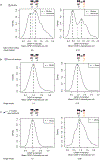
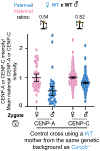
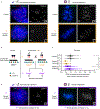

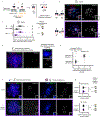


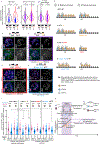
Similar articles
-
Maternal inheritance of centromeres through the germline.Curr Top Dev Biol. 2020;140:35-54. doi: 10.1016/bs.ctdb.2020.03.004. Epub 2020 Apr 25. Curr Top Dev Biol. 2020. PMID: 32591081 Review.
-
Assembly in G1 phase and long-term stability are unique intrinsic features of CENP-A nucleosomes.Mol Biol Cell. 2013 Apr;24(7):923-32. doi: 10.1091/mbc.E13-01-0034. Epub 2013 Jan 30. Mol Biol Cell. 2013. PMID: 23363600 Free PMC article.
-
Epigenetic centromere propagation and the nature of CENP-a nucleosomes.Cell. 2011 Feb 18;144(4):471-9. doi: 10.1016/j.cell.2011.02.002. Cell. 2011. PMID: 21335232 Free PMC article.
-
The Ino80 complex mediates epigenetic centromere propagation via active removal of histone H3.Nat Commun. 2017 Sep 13;8(1):529. doi: 10.1038/s41467-017-00704-3. Nat Commun. 2017. PMID: 28904333 Free PMC article.
-
The histone variant CENP-A and centromere specification.Curr Opin Cell Biol. 2008 Feb;20(1):91-100. doi: 10.1016/j.ceb.2007.11.007. Epub 2008 Jan 15. Curr Opin Cell Biol. 2008. PMID: 18226513 Review.
Cited by
-
Meiosis-specific distal cohesion site decoupled from the kinetochore.Nat Commun. 2025 Mar 3;16(1):2116. doi: 10.1038/s41467-025-57438-w. Nat Commun. 2025. PMID: 40032846 Free PMC article.
-
Meiosis-specific decoupling of the pericentromere from the kinetochore.bioRxiv [Preprint]. 2024 Jul 22:2024.07.21.604490. doi: 10.1101/2024.07.21.604490. bioRxiv. 2024. PMID: 39091844 Free PMC article. Preprint.
-
A dynamic population of prophase CENP-C is required for meiotic chromosome segregation.PLoS Genet. 2023 Nov 29;19(11):e1011066. doi: 10.1371/journal.pgen.1011066. eCollection 2023 Nov. PLoS Genet. 2023. PMID: 38019881 Free PMC article.
-
Adaptive evolution of CENP-T modulates centromere binding.Curr Biol. 2025 Mar 10;35(5):1012-1022.e5. doi: 10.1016/j.cub.2025.01.017. Epub 2025 Feb 12. Curr Biol. 2025. PMID: 39947176
-
Maternal CENP-C restores centromere symmetry in mammalian zygotes to ensure proper chromosome segregation.bioRxiv [Preprint]. 2025 Jul 28:2025.07.23.666394. doi: 10.1101/2025.07.23.666394. bioRxiv. 2025. PMID: 40766472 Free PMC article. Preprint.
References
-
- Dumont M & Fachinetti D DNA Sequences in Centromere Formation and Function. Prog Mol Subcell Biol 56 305–336 (2017). - PubMed
-
- Chmátal L, Schultz RM, Black BE & Lampson MA Cell Biology of Cheating-Transmission of Centromeres and Other Selfish Elements Through Asymmetric Meiosis. Prog Mol Subcell Biol 56 377–396 (2017). - PubMed
Publication types
MeSH terms
Substances
Grants and funding
LinkOut - more resources
Full Text Sources
Molecular Biology Databases

